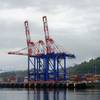The U.S. Environmental Protection Agency (EPA) has determined that a “no discharge zone” can be established for the New York State portion of the St. Lawrence River. The New York State Department of Environmental Conservation petitioned the EPA to prohibit boats from discharging sewage into the river by establishing a “no discharge zone” for the area. The EPA has reviewed the state petition and found that there are adequate facilities around the St. Lawrence for boats to pump out their sewage, rather than dumping it in the water.
“It’s astonishing that in 2016, boaters can dump raw sewage into the St. Lawrence River. Declaring this area of the St. Lawrence a “no discharge zone” would provide cleaner water for people who use this river,” said Regional Administrator Judith A. Enck. “The EPA and New York State looked carefully at the information and agree that the St. Lawrence has enough facilities to remove treated waste from all types of vessels and keep it from entering the river.”
Sewage discharges from boats can contain harmful levels of pathogens and chemicals such as formaldehyde, phenols and chlorine, which have a negative impact on water quality, pose a risk to people’s health and damage fish and wildlife. The EPA is encouraging the public to comment on its proposed approval until April 25, 2016.
The proposed “no discharge zone” for the New York State portion of the St. Lawrence River stretches from Tibbetts Point on Lake Ontario to the western edge of Lake Saint Francis, not including those waters that lie within the exterior borders of the St. Regis Mohawk Tribe Reservation. The proposed “no discharge zone” encompasses approximately 112 river miles and shoreline, including numerous tributaries, harbors and embayments of the river— including Eel Bay, Lake of the Isles and Goose Bay— and other formally designated habitats and waterways of local, state and national significance.
This action is part of an EPA/New York State Department of Environmental Conservation strategy to eliminate the discharge of sewage from boats into the state’s waterways. New York State water bodies that have already been established as “no discharge zones” include Lakes Erie, Ontario, Champlain, and George, the New York State Canal System and the Hudson River, among others.











